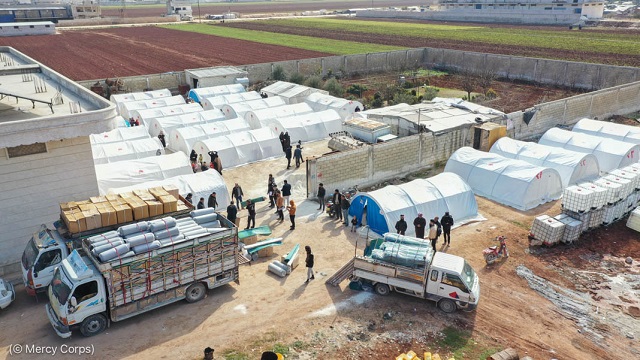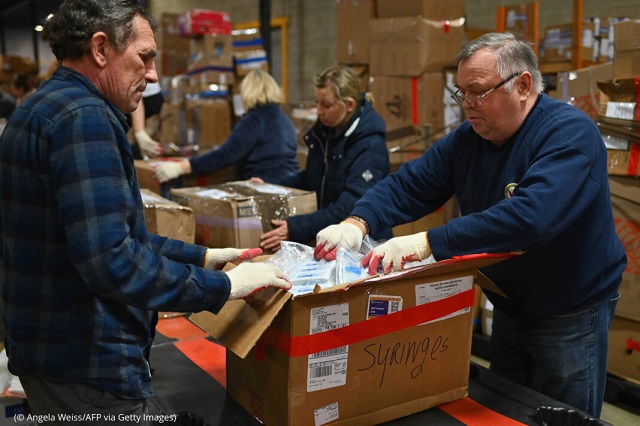People in the United States donated almost half a trillion dollars to charity for the third year in a row in 2022, continuing a tradition of giving that is central to American life.
The $499.33 billion that American donors gave last year came despite lingering economic shocks from the COVID-19 pandemic, as well as stock market declines and rising prices. The donations went to help fellow Americans, as well as to charitable efforts and disaster responses around the world.
“Despite uncertain economic times, Americans demonstrated how essential they view the nonprofit sector and its ability to solve big problems,” Josh Birkholz, chair of the Giving USA Foundation, said June 20, announcing the release of its Annual Report on Philanthropy, based on data from the Indiana University Lilly Family School of Philanthropy (IUPUI).

Mercy Corps, based in Oregon, is one of many U.S.-based nonprofits serving people abroad, including people who were displaced by the February earthquakes in Syria. (© Mercy Corps)
IUPUI Associate Dean for Research and International Programs Una Osili says the U.S. culture of giving is driven in part by a determination to solve social problems, a value that unites Americans of different backgrounds and income levels.
“The United States is quite unique,” Osili says. “If you are an individual and you see a problem that needs to be solved in the community you can start a nonprofit” to address it.
The country is home to more than a million charities, by some estimates. During the COVID-19 pandemic, 61 million Americans 16 and older, or 23% of that population, volunteered for an organization, according to AmeriCorps and the U.S. Census Bureau.
In many cases, Americans’ desire to solve problems leads to charitable giving abroad, especially in times of crisis.

Employees and volunteers sort donations headed to Ukraine at a Meest-America Incorporated warehouse in Port Reading, New Jersey, March 8, 2022. (© Angela Weiss/AFP via Getty Images)
The United States’ rich immigrant heritage also plays a role in charitable giving, Osili says, as immigrants often maintain ties to and closely follow events in their country of origin. Americans gave nearly $50 billion (PDF, 895KB) to people abroad in 2020 (the latest year data is available), more than any other country.
In the first two weeks, after devastating earthquakes hit southeastern Türkiye and northern Syria in February, the U.S. private sector donated $66 million, while individuals contributed food, clothing, baby supplies and other necessities.
In 2022, Osili says, the U.S. saw “a big uptick in giving to international affairs” as U.S donors supported people displaced by Russia’s war against Ukraine and catastrophic flooding in Pakistan.
“It’s part of our social, civic and economic life,” she says. “It’s hard to think about a part of our society that isn’t touched by philanthropy.”
Banner image: Turkish officials said they received about 136 metric tons of donations in the U.S. in the days after earthquakes struck Türkiye and northern Syria in February. Above, volunteers load donations at the Turkish Embassy in Washington February 10. (© Jacquelyn Martin/AP)
The original article is here on ShareAmerica.







COMMENTS0
LEAVE A COMMENT
TOP